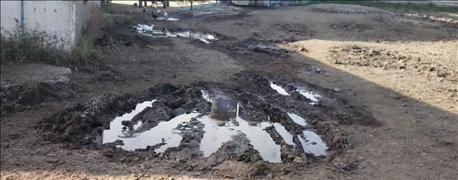
How would you like to walk around the corner of your barn every morning and see a wet, muddy mess extending from the barn where animals move back and forth into the area where they feed? One Whitley County farmer found out he didn’t have to live with this quagmire. There is help available to convert such a depressing scene into one that’s guaranteed to get your day off to a brighter start.

MUD, MUD AND MORE MUD: If this sight looks familiar, you might be dreading caring for livestock later this winter and into spring. There are options to eliminate such a mess.
Kris Vance, communications specialist with the Natural Resources Conservation Service in Indiana, says the first step is contacting your local NRCS office. Often it’s located in the same USDA Service Center as the Farm Service Agency. In most counties, you will find the NRCS office co-located with the county soil and water conservation district. Since conservation progress is all about a partnership in Indiana, anyone in these offices should be able to steer you in the right direction.
Before the project
A landowner in Whitley County uses draft horses for farming purposes, Vance notes. Where he fed his horses and where they moved back and forth from the barn to various areas became muddy and mixed with manure over time. Take a look at the “before” picture.
After rains, especially big rains, the area became excessively muddy, the landowner reports. Soil erosion was an issue. When erosion occurred, a mixture of both soil sediment and manure particles ran off and wound up in local streams.
Conservation personnel in Whitley County suggested installing a practice called a heavy-use protection area to resolve the issue with mud and manure. The landowner enrolled in an Environmental Quality Incentives Program contract.
After the transformation
Conservation personnel outlined a plan to lay down geotextile fabric in the area. A stone base was installed over the fabric, and the stone was covered with ag lime.
The ag lime provides a smooth surface, Vance says. Animals can walk on it without problems. It also forms a smooth base for scooping and hauling off manure, instead of allowing it to mix with mud.
Over time, the stone base and geotextile fabric keeps the area from becoming muddy, she observes. Maintenance is often minimal, and typically might involve reshaping the lime surface over time.
BEFORE: A landowner in Whitley County uses draft horses for farming purposes. This area where he feeds the horses and they walk a lot became muddy and mixed with manure over time. AFTER: Here is the same area after a heavy-use protection area treatment was installed. (Photos courtesy of Kris Vance, Natural Resources Conservation Service)
About the Author(s)
You May Also Like




